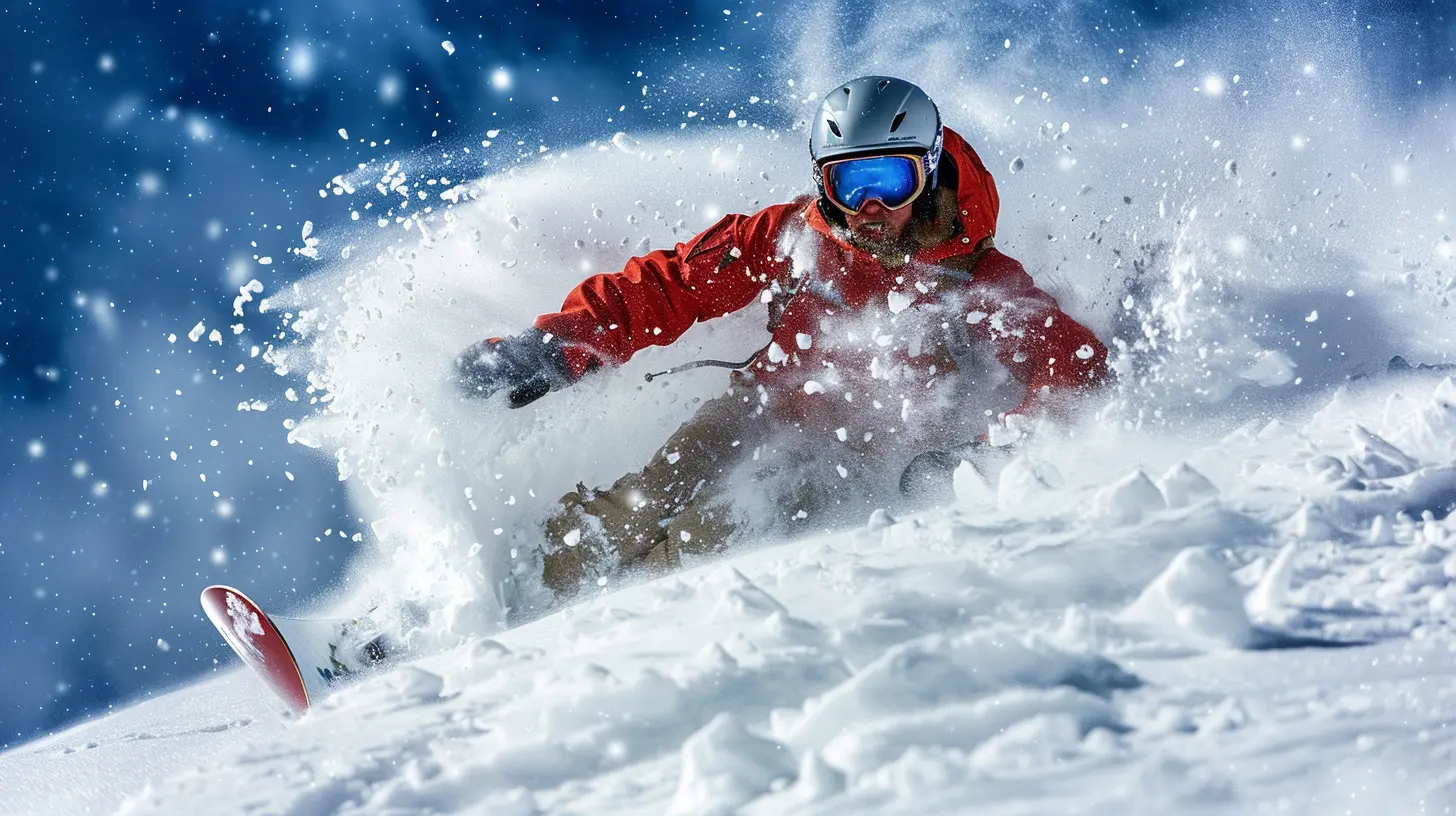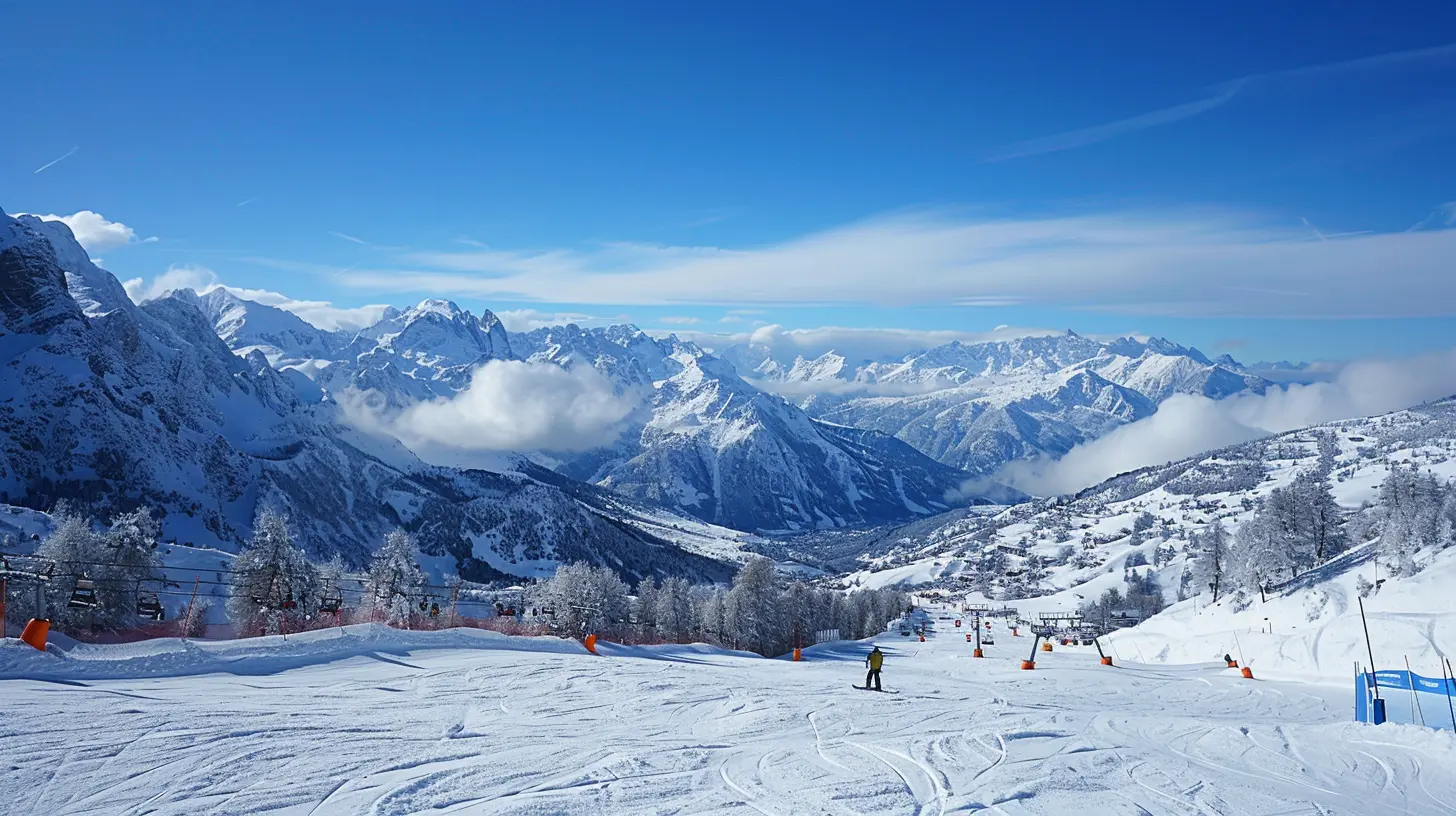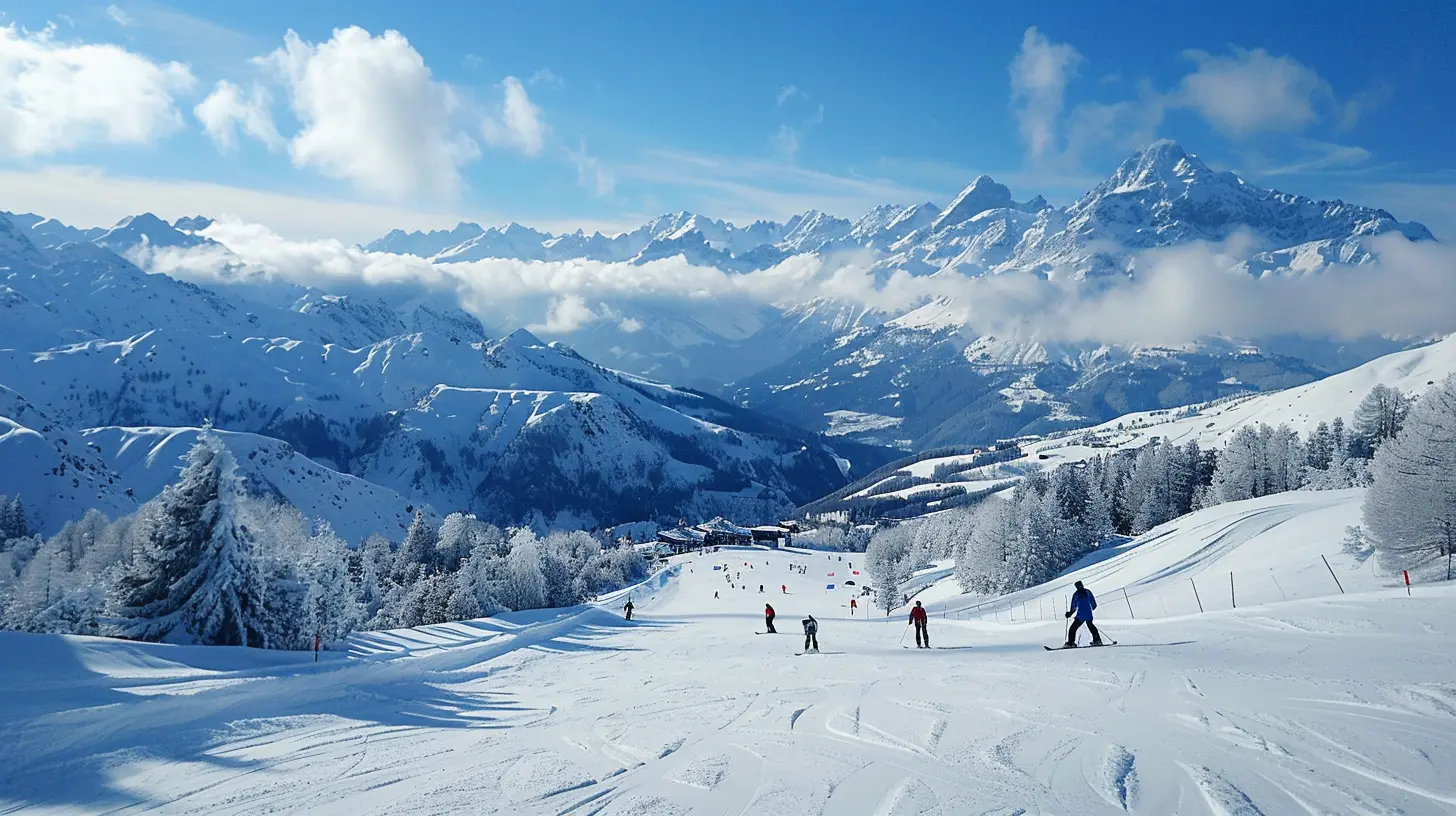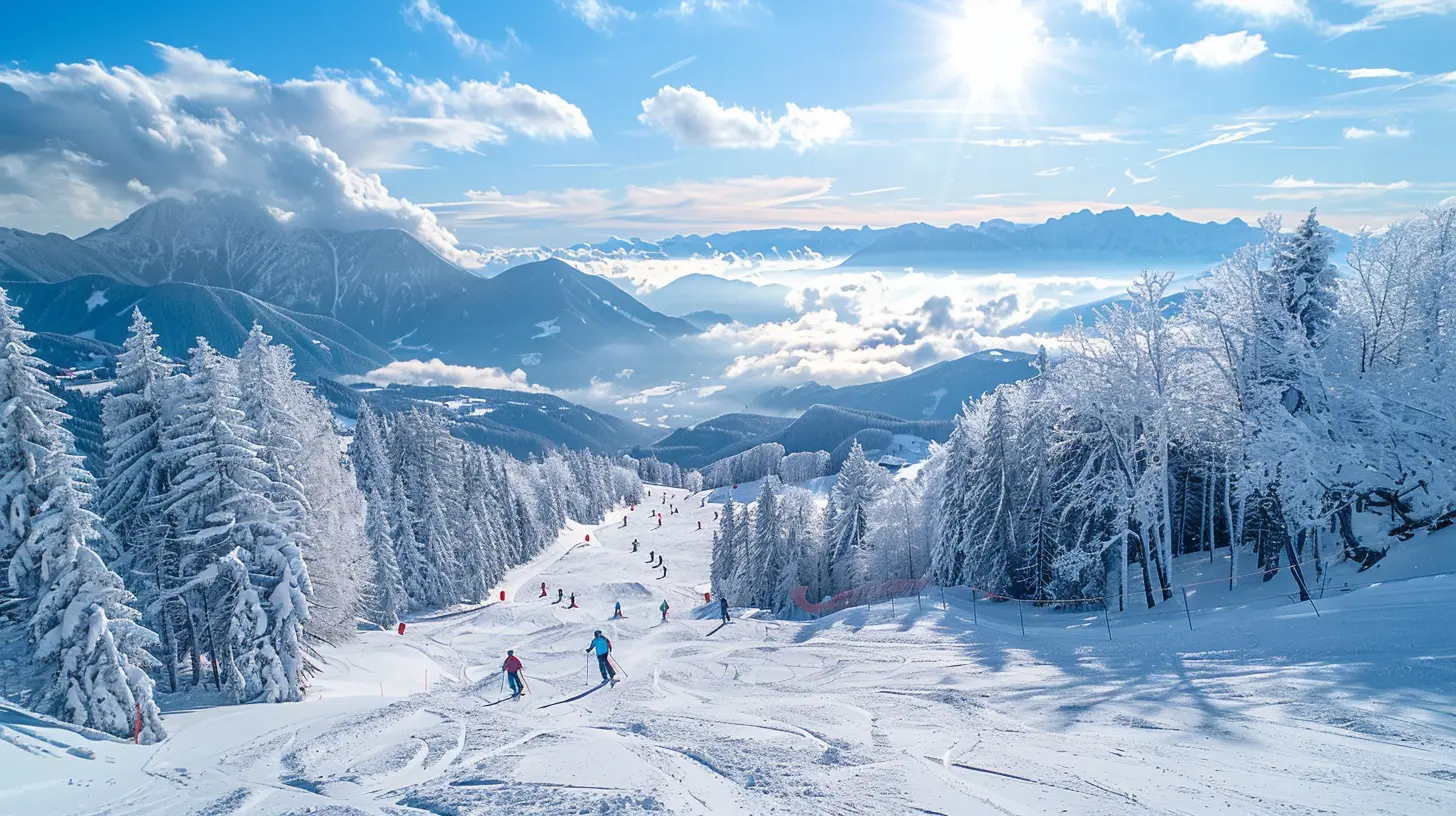Snowboarding in the Alps: What You Need to Know Before You Go
16 October 2025
Ah, snowboarding in the Alps—just the thought of it is enough to get any snowboarder’s heart racing. It’s the ultimate dream for many winter sports enthusiasts. With breathtaking views, powdery snow, and some of the best slopes on Earth, the Alps are a snowboarding paradise. But before you pack your bags and head for the mountains, there are a few things you should consider to make the most of your trip.
Whether you're an experienced rider or just getting your feet wet (or rather, snowy), there's a lot to know about snowboarding in the Alps. From the best times to go, to essential gear, to understanding the cultural nuances of snowboarding in Europe, this guide covers everything you need to know before hitting the slopes.

Why Snowboard in the Alps?
First things first—why should you choose the Alps over other snowboarding destinations? Well, the Alps are like the Disneyland of snowboarding, but with way more adrenaline and snow. With towering peaks, diverse terrain, and some of the most iconic resorts in the world, the Alps offer something for everyone.Unmatched Terrain
The Alps stretch across eight countries, offering a wide variety of slopes for every level of snowboarder. Whether you're into long, leisurely descents, challenging off-piste routes, or adrenaline-pumping snow parks, the Alps have you covered. Some of the best-known resorts such as Chamonix in France, Verbier in Switzerland, and St. Anton in Austria offer world-class snowboarding experiences.Snow Reliability
If there's one thing you can count on in the Alps, it's snow. Thanks to their high altitude, many resorts in the Alps boast consistent snowfall throughout the season. And even in the rare case of a dry spell, many resorts have excellent snowmaking facilities to ensure that you can still enjoy the slopes.Scenic Beauty
Snowboarding in the Alps isn’t just about the thrill of the ride—it’s also about the view. The Alps are home to some of the most stunning mountain scenery you’ll ever see. Picture yourself cruising down a slope, surrounded by snow-capped peaks, alpine forests, and quaint villages. It’s like snowboarding through a postcard.
When Is the Best Time to Snowboard in the Alps?
Timing is everything. The Alps offer a long snowboarding season, but when you go can make a big difference to your experience.Early Season (December to January)
If you’re eager to hit the slopes as soon as possible, the early season can be a great time to visit. Resorts typically open in December, although snow conditions can be a bit hit-or-miss depending on the altitude and early snowfall. On the plus side, early-season snowboarding often means fewer crowds and lower prices.Peak Season (February to March)
This is when the Alps are at their best. The snow is deep, the weather is stable, and the slopes are in perfect condition. However, peak season also means crowds. If you’re planning a trip during this time, be prepared for busier slopes and higher accommodation prices. But hey, the experience is more than worth the hassle!Late Season (April to May)
The late season can be a hidden gem for snowboarders who don’t mind softer snow and warmer weather. Some high-altitude resorts remain open until May, and you can often score great deals on accommodation and lift passes. Plus, there's nothing quite like snowboarding in a T-shirt while soaking up some spring sunshine.
Choosing the Right Resort
Not all resorts are created equal, and the right one for you will depend on your skill level, preferences, and budget.For Beginners: Les Gets, France
If you’re new to snowboarding, Les Gets is a fantastic option. It’s part of the Portes du Soleil ski area, but it’s a bit quieter and more laid-back compared to other resorts. The slopes are wide and forgiving, perfect for learning the ropes without the fear of getting in over your head.For Intermediates: St. Anton, Austria
St. Anton is a bit of a snowboarder’s playground. It has everything from long groomers to fun off-piste areas, making it ideal for intermediate riders. The après-ski scene is also legendary, so if you like to party after a day on the slopes, St. Anton is your spot.For Experts: Verbier, Switzerland
If you’re an advanced rider looking for a challenge, Verbier is where you want to be. Known for its steep, technical terrain and off-piste opportunities, Verbier will push your snowboarding skills to the limit.For Freestyle Lovers: Laax, Switzerland
Laax is the freestyle mecca of the Alps. With four snow parks, a massive halfpipe, and plenty of natural terrain features, it’s a dream come true for snowboarders who love to get airborne. The resort even hosts major freestyle events throughout the season, so you might catch some pro riders throwing down tricks while you’re there.
What Gear Should You Bring?
Packing for a snowboarding trip can be overwhelming, especially if it’s your first time riding in the Alps. Here’s a list of essentials you’ll need to ensure you’re fully prepared.Snowboard and Bindings
You can rent gear at most resorts, but if you’re serious about snowboarding, it’s always better to bring your own board and bindings. Make sure your board is appropriate for the conditions you’ll be riding in. If you’re planning on doing a lot of off-piste or powder riding, consider bringing a powder board.Boots
Good snowboard boots are crucial. They should fit snugly without being too tight, and they should offer enough support for your riding style. Again, renting is an option, but nothing beats the comfort of a well-worn pair of your own boots.Outerwear
Snowboarding in the Alps means dealing with a variety of weather conditions, so you’ll need high-quality, waterproof outerwear. A good snow jacket, pants, gloves, and hat are non-negotiable. Don’t forget layers—thermal base layers, mid-layers, and a neck warmer are essential for staying warm on colder days.Goggles
Visibility can change quickly in the mountains, so a good pair of goggles is a must. Look for goggles with interchangeable lenses so you can swap them out depending on the weather conditions.Avalanche Gear (If Going Off-Piste)
If you’re planning on venturing off-piste, you should never do so without proper avalanche safety gear. This includes a beacon, shovel, and probe. And don’t forget about avalanche training—knowing how to use your gear is just as important as having it.Know the Rules of the Slopes
Snowboarding in the Alps comes with its own set of rules and etiquette. Knowing these will not only keep you safe but also ensure you don’t accidentally upset the locals.Right of Way
The person in front of you always has the right of way. It’s your responsibility to avoid them, not the other way around. Always keep a safe distance and be aware of your surroundings.No Stopping in the Middle of the Slope
If you need to stop for a break, make sure you move to the side of the slope. Stopping in the middle of the run can be dangerous for both you and other riders.Respect Closed Areas
If a slope or area is marked as closed, don’t ignore the signs. These areas are closed for a reason—usually because of unsafe conditions like avalanches or poor visibility.
Après-Ski: What to Do After a Day on the Slopes
Snowboarding isn’t just about what happens on the mountain. Après-ski, or the socializing that happens after a day of snowboarding, is just as much a part of the experience in the Alps. Whether you want to enjoy a drink, indulge in local cuisine, or even hit the dance floor, the Alps have plenty of options.Grab a Drink
One of the best parts of après-ski is relaxing with a drink in hand. Many resorts have cozy bars where you can warm up with a mulled wine or a local beer. In Austria, try the traditional drink, "Glühwein," which is a warm spiced wine that’ll warm you up in no time.Try the Local Cuisine
No snowboarding trip to the Alps is complete without indulging in some local food. Think fondue, raclette, and hearty alpine dishes that’ll refuel you after a long day on the slopes. Trust me, a cheese-filled dinner is the perfect way to end your day.Dance the Night Away
If you’re in the mood to party, the Alps won’t disappoint. Many resorts have lively après-ski scenes with DJs, live music, and packed dance floors. St. Anton, in particular, is famous for its wild après-ski parties, so if you want to dance the night away, that’s the place to be.Final Thoughts
Snowboarding in the Alps is an experience like no other. With incredible terrain, reliable snow, and a vibrant après-ski culture, it’s no wonder that snowboarders from around the world flock to this mountain range every winter. Whether you're a beginner or a seasoned pro, there's something for everyone in the Alps. Just make sure you plan ahead, pack the right gear, and respect the local customs to ensure you have the trip of a lifetime.###
all images in this post were generated using AI tools
Category:
SnowboardingAuthor:

Easton Simmons
Discussion
rate this article
1 comments
Wendy Cummings
Pack your goggles and sense of adventure—Alps await your shredding!
October 21, 2025 at 6:57 PM


